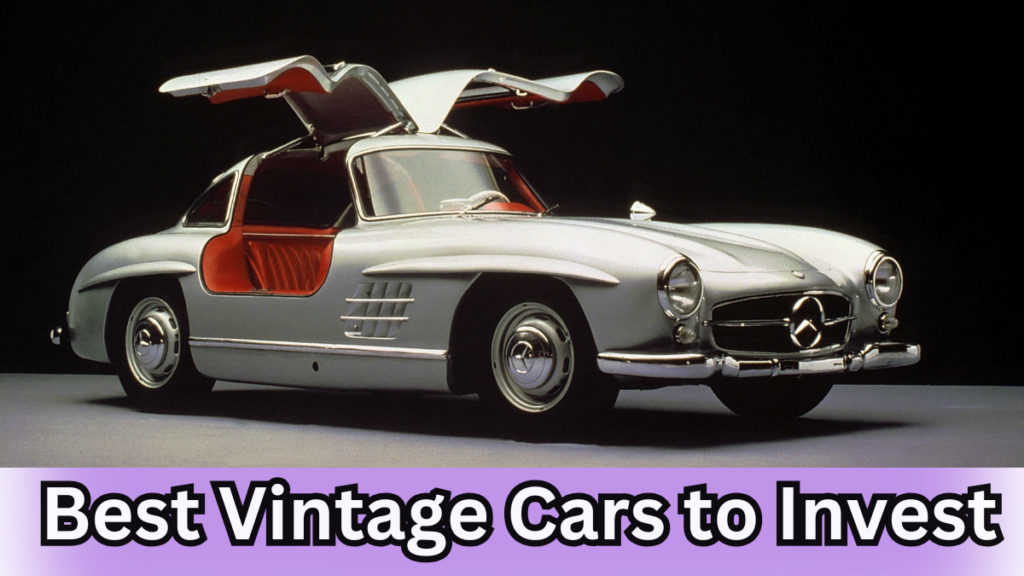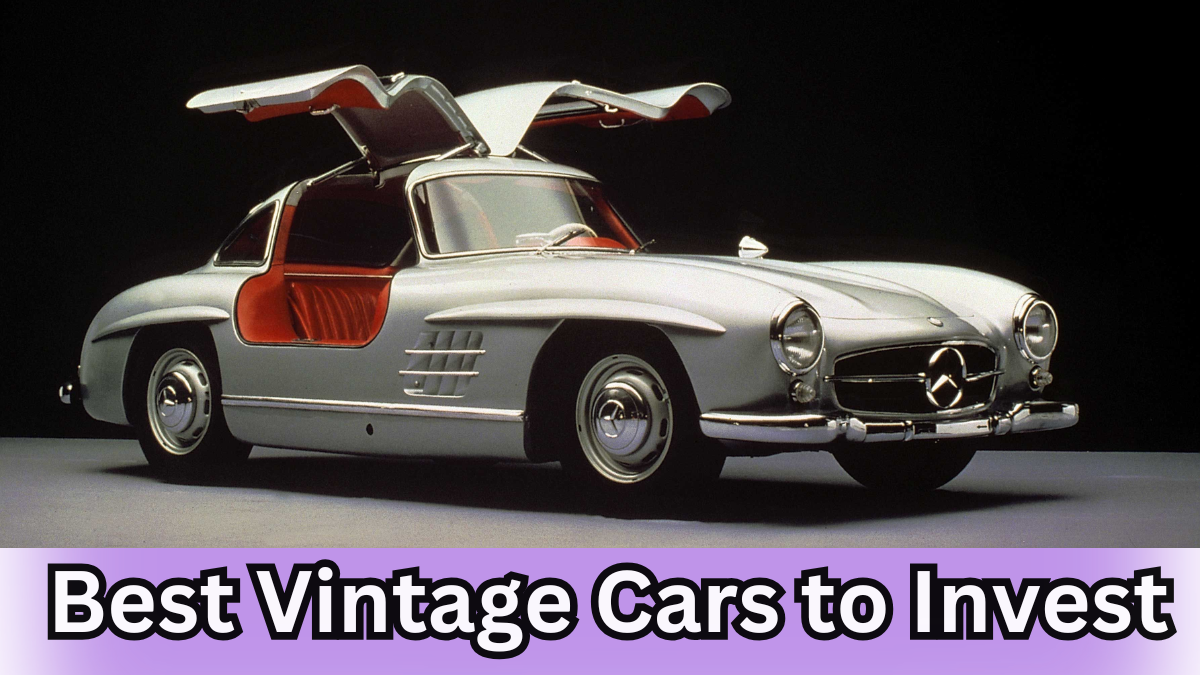There’s something truly captivating about vintage cars — whether it’s the purr of the engine, the craftsmanship, or the nostalgic feel they bring. But today, these classic machines aren’t just for display or weekend drives. More investors are realizing that vintage vehicles are also smart financial assets. Welcome to the world of classic car investment.
If you’re considering entering this space, you’re in the right place. Here’s a curated guide to the best vintage cars to invest in 2025, especially for those looking for vehicles with long-term appreciating car value.

Why Invest in Vintage Cars?
Classic cars are becoming more than just collector’s items. They’re tangible, enjoyable assets that can also offer financial returns.
-
Tangible Value: Unlike stocks or crypto, you can actually use and enjoy your investment.
-
Limited Supply: Discontinued production increases rarity and exclusivity.
-
High Collector Demand: Classic car auctions and shows continue to attract global attention.
-
Appreciation Over Time: Many models gain significant value with age, especially if well-maintained.
Top Vintage Cars Worth Investing in 2025
This list highlights the best vintage cars to invest in 2025, considering market trends, rarity, and collector demand.
| Car Model | Why It’s a Good Investment | Estimated Price (2025) |
|---|---|---|
| Porsche 911 (1964–1989) | Timeless design, solid performance, and high demand among collectors | $60,000 – $150,000 |
| Jaguar E-Type (1961–1974) | Iconic styling, rising European interest, featured in numerous films | $70,000 – $130,000 |
| Ford Mustang (1965–1970) | American muscle icon, affordable entry point, rising millennial interest | $30,000 – $75,000 |
| Mercedes-Benz 280SL (1967–1971) | Known for its unique “Pagoda” roof, admired globally for its aesthetics and reliability | $80,000 – $150,000 |
| Toyota 2000GT (1967–1970) | Rare Japanese classic, fast-rising global value, extremely limited numbers | $900,000 – $1.5M+ |
| BMW 2002 (1968–1975) | Sporty, fun to drive, and still within reach for entry-level investors | $25,000 – $45,000 |
Tips for First-Time Classic Car Investors
If you’re thinking of diving into classic car investment, here are some smart starting points to consider:
-
Do Thorough Research: Understand the car’s production history, maintenance record, and potential issues.
-
Restoration Costs Matter: Some vintage cars are expensive to restore — budget accordingly.
-
Originality Adds Value: Cars with original parts and matching VINs tend to be more valuable.
-
Storage Conditions: Keep your car in a dry, secure, climate-controlled environment.
-
Stay Updated on Market Trends: Follow auction results and collector communities.
How Classic Cars Appreciate Over Time
Not all classic cars grow in value at the same rate. But with careful selection and proper care, certain models show strong returns.
| Time Owned | Estimated Appreciation |
|---|---|
| 1–3 Years | 10%–25% |
| 3–5 Years | 25%–50% |
| 5–10 Years | 50%–100%+ |
Cars like the Porsche 911 and Jaguar E-Type have historically proven to be reliable in terms of appreciating car value, making them great picks for long-term investors.
Final Thoughts
Vintage cars combine the joy of ownership with real investment potential. Whether you’re building a dream garage or looking for assets that gain value, these vehicles can offer both emotional and financial satisfaction.
When approached with research and patience, classic car investment can be a rewarding venture. The best vintage cars to invest in 2025 are more than just beautiful machines — they are long-term appreciating assets with a story.
FAQs
1. What makes a vintage car a good investment?
A classic car becomes a good investment when it’s rare, well-maintained, and in demand. Limited production numbers, original parts, and documented history also contribute to higher value.
2. Do all vintage cars increase in value?
No, not all vintage cars appreciate. The value depends on market demand, rarity, model reputation, and condition. Choosing the right car is key for ensuring appreciating car value.
3. Is it better to invest in a restored or unrestored classic?
If you’re investing for value, a properly restored classic or an untouched, original-condition car is best. Restoring a car yourself can be costly and time-consuming unless you’re experienced.
4. Can I drive my vintage investment regularly?
Light, occasional driving is fine and even beneficial. However, high mileage and wear-and-tear may lower the car’s resale value. Most investors preserve the condition with minimal use.
Click here to learn more
